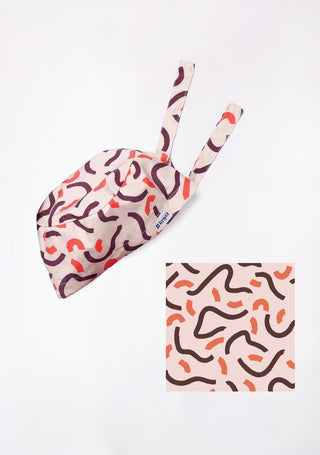Becoming a doctor is a long and demanding journey that takes anywhere from 10 to 16 years, depending on the specialty and country of training. Despite the challenges of medical school, residency, and board certification, the reward of saving lives and making a difference in people’s health makes the effort worthwhile.
Step 1: Completing a Bachelor's Degree (4 Years)
The journey to becoming a doctor begins with undergraduate education, typically lasting four years. Students pursuing medicine often major in biology, chemistry, biochemistry, or another science-related field. However, some choose non-science majors while completing the required pre-med courses, such as:
- General Chemistry
- Organic Chemistry
- Biology
- Physics
- Mathematics
- English
During their undergraduate years, aspiring doctors must also maintain a high GPA, gain clinical experience, participate in research, and engage in extracurricular activities to strengthen their medical school applications. Many students also volunteer in hospitals or shadow doctors to gain firsthand insight into the medical field.
Shop the Best Lab Coats from Here!
Step 2: Taking the Medical College Admission Test (MCAT) (Preparation: 3–6 Months)
To gain admission to medical school, students must take the MCAT (Medical College Admission Test), a standardized exam that assesses their understanding of:
- Biological and Chemical Foundations
- Psychological and Social Behavior
- Critical Analysis and Reasoning Skills
Preparing for the MCAT can take anywhere from three to six months, depending on an individual's background and study habits. Scoring well is crucial, as medical schools use this score, along with GPA and extracurricular activities, to evaluate applicants.
Step 3: Medical School (4 Years)
Once accepted into medical school, students undergo another four years of rigorous education, divided into two phases:
Preclinical Years (Years 1–2)
- Classroom-based learning
- Courses in anatomy, physiology, pathology, pharmacology, microbiology, and medical ethics
- Laboratory work and simulated patient interactions
Clinical Years (Years 3–4)
- Hands-on experience in hospitals and clinics
- Rotations through different specialties like internal medicine, surgery, pediatrics, psychiatry, and obstetrics & gynecology
- Development of patient interaction and diagnostic skills
At the end of medical school, students must pass the United States Medical Licensing Examination (USMLE) Step 1 and Step 2 to move forward in their training.
Browse best Scrubs Collection
Step 4: Residency Training (3–7 Years, Depending on Specialty)
After graduating from medical school, students earn the title of Doctor of Medicine (MD) or Doctor of Osteopathic Medicine (DO). However, they are not yet fully licensed to practice independently. They must complete a residency program, which provides hands-on, supervised training in their chosen specialty.
Residency programs vary in length depending on the medical specialty:
- Family Medicine, Internal Medicine, Pediatrics: 3 years
- Emergency Medicine, Psychiatry, Neurology: 4 years
- General Surgery, Pathology, Anesthesiology, Radiology: 5 years
- Neurosurgery, Cardiology, Plastic Surgery: 6–7 years
During residency, doctors work long hours (often 60–80 hours per week) and earn a salary significantly lower than a fully licensed physician. They must also pass the USMLE Step 3 exam to obtain a medical license.
Step 5: Fellowship (Optional, 1–3 Additional Years)
Some doctors choose to further specialize in highly focused fields, such as:
- Cardiology (Heart Specialists) – 3 years
- Oncology (Cancer Specialists) – 2–3 years
- Pediatric Surgery – 2–3 years
- Neonatology (Newborn Care) – 3 years
Fellowships provide additional, in-depth training and expertise in a sub-specialty. While optional, fellowships are often required for competitive, high-paying positions.
Step 6: Board Certification and Licensing (Varies by Country and Specialty)
To become a fully independent doctor, physicians must obtain board certification in their specialty by passing rigorous exams administered by medical boards.
Additionally, doctors must obtain state or national licensure to practice legally. This process ensures they meet the necessary medical standards and ethical guidelines.
Variations by Country
The time frame for becoming a doctor varies in different countries.
- United States & Canada: 10–16 years (Bachelor’s + Medical School + Residency)
- United Kingdom: 5–6 years (Medical School) + 2-year Foundation Program + Specialty Training (3–8 years)
- India: 5.5 years (MBBS) + Residency (3–6 years)
- Germany: 6 years (Medical School) + Residency (4–6 years)
- Australia: 5–7 years (Medical Degree) + Residency (3–7 years)
Challenges and Rewards of Becoming a DoctorChallenges
- Time Commitment: The long years of study and training require patience and perseverance.
- Financial Burden: Medical school tuition is expensive, often leaving students with debt.
- Work-Life Balance: Doctors work long, demanding hours, especially during residency.
Rewards
- Saving Lives: Doctors have a direct impact on patient health and well-being.
- Job Security: Physicians are always in demand, ensuring stable employment.
Financial Stability: Once fully licensed, doctors earn competitive salaries, with specialists making even more.












